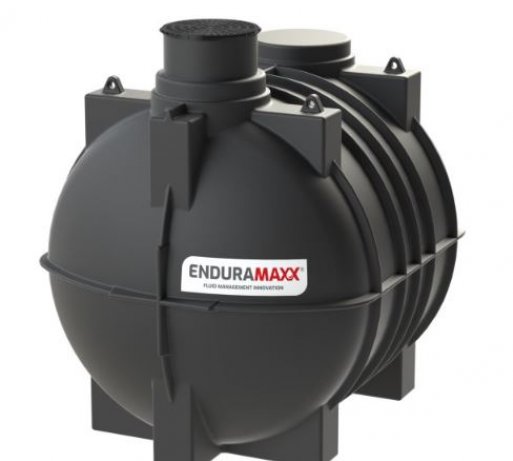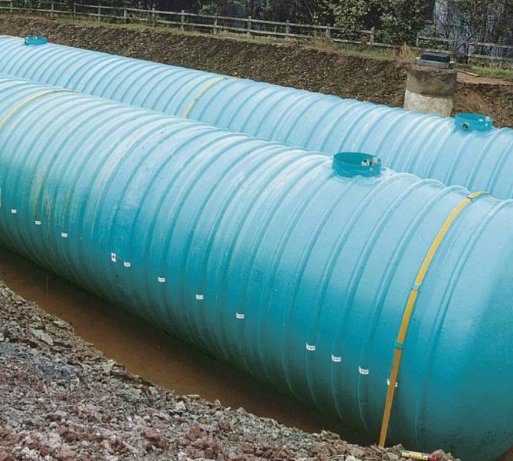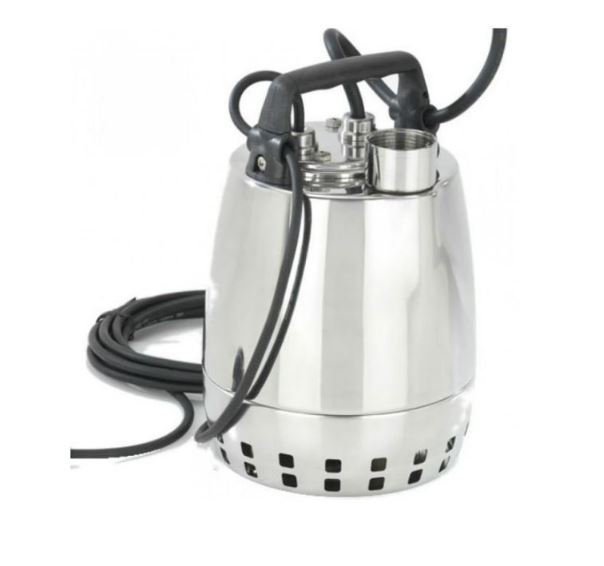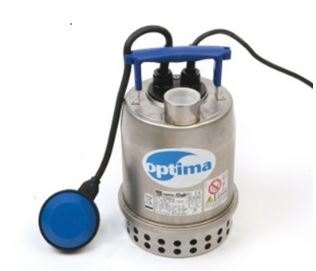Guide to Underground Water Tanks

Underground Water Storage is a practical and efficient solution for managing water resources. It involves the installation of storage tanks or reservoirs below the ground surface to collect and store rainwater or other water sources.
Underground water tanks in the UK are becoming increasingly popular due to their various benefits, such as saving space, reducing the environmental impact, and providing a reliable water source during droughts or water restrictions. Here is a guide to help you understand and install an underground water tank in the UK.
Determine the Purpose
Decide why you want an underground water tank. It could be for rainwater harvesting, irrigation, or to store water for emergencies. Knowing the purpose of the tank will help you choose the right size and type of tank. Required.
Choose the right tank
There are different types of underground water tanks available in the UK, including polyethylene tanks, concrete tanks, and fibreglass (GRP) tanks. Considering factors such as durability, capacity, space availability, and cost when selecting the tank.
Polyethylene Tanks
Polyethylene underground water tanks have gained popularity due to their numerous advantages. Firstly, these tanks are lightweight, making them easy to transport and install. They require less labour and equipment during installation, resulting in cost savings. Additionally, their flexibility allows them to withstand ground movements, reducing the risk of cracking or damage.
On the downside, polyethylene tanks have limitations in terms of capacity. They are available in smaller sizes, making them more suitable for residential or small-scale applications. Moreover, they are not as durable as concrete tanks and may be susceptible to punctures or damage from sharp objects.
Cost is another consideration, as polyethylene tanks can be relatively more expensive compared to other materials. However, their lower installation and maintenance costs may offset this initial investment.
Concrete Tanks
Concrete underground water tanks have their own set of advantages and disadvantages. One of the major advantages of concrete tanks is their durability. They are known for their strength and longevity, with the ability to withstand harsh weather conditions and external forces. Concrete tanks also have a larger capacity, making them suitable for commercial or industrial applications.
Another advantage of concrete tanks is their thermal properties. They have excellent insulation, which helps to maintain the temperature of the stored water.
Along with advantages, there are some disadvantages to consider with concrete underground water tanks. Firstly, concrete tanks are heavy and require heavy machinery for installation, resulting in higher installation costs. They also have a longer installation time compared to other options.
Another drawback is the possibility of cracks or leakages over time. Concrete is prone to cracking due to ground movement or settling, which can lead to water loss or contamination.
Fibreglass (GRP) Tanks
GRP (glass reinforced plastic) underground water tanks are lightweight in nature, making them easier to handle and install compared to concrete tanks. Their lightweight construction also reduces transportation costs. Additionally, fibreglass tanks are highly resistant to corrosion, making them suitable for long-term use without the risk of rust or degradation.
Another advantage is their versatility in terms of shape and size. Fibreglass tanks can be customised to fit specific requirements, allowing for a tight fit in limited spaces. They also have excellent insulation properties, helping to maintain water temperature.
However, fibreglass (GRP) tanks do have some disadvantages to consider as well. They can be more expensive compared to other options such as plastic tanks, also if they are exposed to UV light, they can degrade over time and weaken the structure, however if in the ground, this will minimise the UV rays affecting it.

Plastic Underground Water Tanks

GRP Underground Water Tanks
Applications
- Residential Buildings - can provide a supplementary water source for domestic use, such as flushing toilets, washing clothes, or watering gardens.
- Commercial and Industrial Facilities - used to meet water demands in commercial buildings, manufacturing plants, or industrial processes.
- Agriculture and Irrigation - A valuable purpose for farmers, enabling them to store rainwater or other water sources for irrigation during dry periods.
- Emergency Water supply.
Calculate the required size
Determine the amount of water you need to store based on your intended use and the average rainfall in your area. This will help you choose the right capacity for your tank. The most common sizes in the UK range from 1,000 to 10,000 litres. If it's rainwater you are storing, you can use the following link to calculate a rough amount of storage you might require. -
Check Local Regulations
Before installing an underground water tank, check with your local authorities about any permits or regulations you need to comply with. These regulations may vary depending on your area.
Choose a suitable Location
Look for a location on your property that is easily accessible yet hidden from view. Ensure that the area is away from tree roots, utility lines, and potential flooding zones. Consider the terrain, as the tank will need to be installed on level ground.
Excavation and Installation
Hire a professional excavation contractor who specializes in installing underground water tanks. They will excavate the area, prepare the base, and install the tank according to the manufacturer's instructions. It is crucial to follow all safety protocols during the installation process.
Connect the tank to the water source
Depending on your purpose, you may need to connect the tank to a rainwater harvesting system or divert the water from the main water supply. This can be done through the use of gutters, down spouts, and filters.
Set up a filtration system
To ensure the water is clean and safe for use, install a filtration system. This can include a sediment filter, carbon filter, and UV sterilisation if required. Regular maintenance and cleaning of the filtration system are essential to keep the water quality high.
Pump and distribution system
If you plan to use the stored water for irrigation or other purposes, you will need a pump and distribution system. Choose a reliable pump that suits your needs and install pipes or hoses to distribute the water as required.

Water Pumps

Grey Water Pumps
To ensure the successful implementation and operation of an underground water storage, it is essential to follow the following points:
Assess your water needs
Before installing an underground water storage system, evaluate your water requirements based on factors such as household or commercial usage, irrigation needs, or emergency water supply.
Consider site suitability
Choose a suitable location for the underground storage tank, considering factors like soil type, water table level, accessibility, and proximity to water sources.
Conduct a feasibility Study
Assess the economic viability and technical feasibility of the project, including cost analysis, environmental impact, and long-term maintenance requirements.
Design it for safety and durability
Engage professional engineers or consultants to design the storage system, ensuring structural integrity, resistance to external forces, and compliance with safety standards.
Implement proper filtration and treatment
Install appropriate filtration and treatment systems to ensure the stored water is clean and safe for its intended use.
Monitor water quality
Regularly test the water quality to ensure it meets the required standards and take necessary corrective measures if any issues are identified.
Don't overlook local regulations
Familiarise yourself with local regulations, permits, and codes related to underground water storage. Ensure compliance with all legal requirements before initiating the installation process.
Don't neglect maintenance
Regularly inspect and maintain the storage system to prevent leaks, corrosion, or contamination. Follow manufacturers recommendations and conduct repairs promptly if necessary.
Never overlook safety measures
Implement safety features such as secure access points, proper ventilation, and emergency shut-off systems to ensure safety of individuals and the surrounding environment.
Implement water conservations measures
This helps optimise the use of stored water and reduces wastage. This can include efficient irrigation techniques, rainwater harvesting, or grey water recycling.
Regular maintenance
Schedule regular maintenance for your underground water tank. This includes cleaning the tank, checking for leaks, and inspecting the filtration system. Additionally, consider installing an overflow system to prevent flooding during heavy rainfall.
Remember that it is always advisable to consult with a professional if you are unsure about any aspect of installing an underground water tank. They will have the expertise and knowledge to help you make informed decisions and ensure a successful installation.
Read More from Tanks Direct

Off Grid Living

Pay on your own terms with Mondu
Frequently Asked Questions
Water Tanks
Plastic Underground Water Tanks
Do I need planning permission for an underground water tank?
The need for planning permission for an underground water tank depends on various factors, and it's important to be aware of the specific regulations in your area. Typically, if the underground water tank is considered a "permitted development" you may not require planning permission. However, there are key considerations to keep in mind.
If your property is in a designated area, such as a conservation area or national park, there may be stricter regulations regarding construction, which could affect installing your underground water tanks. It's advisable to check with your local planning authority to determine if there are any specific rules or restrictions that apply to your property.
Smaller tanks for personal use are less likely to require planning permission, while larger tanks that could significantly impact your property or the surrounding area may trigger the need for approval. The specific size thresholds can vary by region, so it's crucial to consult with local authorities or planning experts.
Tanks used for rainwater harvesting, garden irrigation, or other non-commercial, non-industrial purposes are generally subject to fewer regulations than tanks used for more extensive operations or purposes. If you plan to use the tank for commercial or industrial applications, additional permits and regulations may apply.
How much does is typically cost to put in an underground water tank?
The cost of installing an underground water tank can vary significantly, depending on several factors. Smaller tanks designed for residential use will generally cost less than larger tanks intended for commercial or industrial applications. The material and type of tank you choose will also play a significant role in cost. Expect to pay more for high-quality, long-lasting tanks.
The method and complexity of installation can greatly affect the cost. Installing an underground tank may require excavation, additional site preparation, backfilling, and proper sealing. If you're planning to install the tank yourself, you might save on labour costs, but it's essential to ensure that the work meets safety and environmental standards. If your property has challenging terrain, rocky soil, or other obstacles, the installation cost may increase. Access to your property, as well as any necessary permits or inspections, can also contribute to the overall expense.
Additional features, such as filtration systems, pumps, and monitoring equipment, can add to the cost too. These components can enhance the functionality and efficiency of your underground water tank but come with their own price tags.
We’d advise obtaining multiple quotes from reputable installers and account for any additional costs such as maintenance, ongoing water quality testing, and compliance with local regulations. By doing so, you can get a more accurate estimate of the total cost to install an underground water tank that meets your requirements.
Where is the best place to install an underground water tank on your property?
Placing the tank close to where you'll need the water reduces the need for extensive piping and minimises energy loss from pumping water over long distances. The tank should be installed in an area where it can be reached easily for any necessary repairs, inspections, or routine maintenance, and its location should allow for proper ventilation and access points to ensure safe entry when required.
Consider the water table level, as you'll want to avoid placing the tank in an area prone to flooding. Additionally, in areas with frost or extreme cold temperatures, it's advisable to install the tank below the frost line to prevent freezing. The soil type can also influence the tank's installation, as some soils may require more significant reinforcement to support the tank's weight.
Be sure to check with your local planning authority for any building or environmental regulations that might dictate where the tank can be placed. There may be specific setback requirements from property lines or structures, which could affect the tank's location on your property.
How deep should an underground water tank be?
The ideal depth for an underground water tank depends on several factors, including local climate conditions and the purpose of the tank. In general, underground water tanks are typically installed at a depth substantial enough to help protect the tank from temperature fluctuations, prevent freezing in colder climates, and ensure stability. It is crucial to install the tank below the frost line to prevent the water from freezing. The frost line varies by location, so it's essential to consult with local authorities and professionals to determine the correct depth for your area. Installing the tank below this level ensures that the water remains unfrozen, maintaining the tank's integrity and preventing potential damage. If the water table is high in your area, it's important to ensure the tank is installed deep enough to prevent it from floating during periods of high groundwater. Additionally, the soil type may influence the tank's installation, as certain soils might require more reinforcement to support the tank's weight at a specific depth.
For rainwater harvesting or irrigation purposes, the tank can often be placed shallower, while tanks used for potable water may require deeper installation to meet water quality standards and ensure water safety.

 Login
Login